
Georgia O'Keeffe Giclée Fine Art Prints 4 of 4
1887-1986
American Art Deco Painter
Georgia O'Keeffe - an artist both unmistakable and unmatched. Born in the rural expanses of Wisconsin in 1887, she started her life with simple scenes but saw the world as a vast canvas. She grew up on a farm, where her earliest inspirations came from her grandmothers, both amateur flower painters. Even as a young girl, O’Keeffe set her sights on becoming an artist, pulling the ambition to create from the landscapes around her. Through hard work and dedication, she turned this dream into a life-long pursuit of art - a career that would eventually make her a leading figure in American modernism.
Her formal studies began at the School of the Art Institute of Chicago, then took her to New York's Art Students League. It was there that she came under the spell of Arthur Wesley Dow’s teachings on Japanese aesthetics, principles that would echo through her work for years. Dow didn’t just teach O'Keeffe how to draw or paint - he taught her to see, a skill she honed and sharpened through teaching jobs across the country. From Virginia to Texas, she not only absorbed the landscapes but also found a powerful, personal voice within abstraction.
In 1916, her work caught the eye of Alfred Stieglitz, the gallery owner and modernist photographer who would become her greatest champion and, later, her husband. Stieglitz saw something rare in O’Keeffe's abstract drawings - a vision not tied to convention, a perspective that could challenge the viewer. Under his mentorship and through her exhibitions at his 291 Gallery in New York, O'Keeffe emerged as a leading force in the avant-garde art world. Her paintings were evocative and modern, often embracing the structures of New York itself. With skyscrapers rising and angular lines dominating her compositions, O’Keeffe captured the pulse of the city with an intensity that was both palpable and profound.
But it was the flowers that first captivated a wider audience. Enlarged to monumental scales, O’Keeffe’s close-up studies of blossoms - lilies, poppies, and hibiscus - became icons. Viewers and critics speculated endlessly about the deeper meanings within those petals, some insisting they held references to female sexuality, a notion she consistently resisted. O’Keeffe maintained her art was not tied to her gender; her focus was form, color, and light, not the imposed narratives of others.
After 1929, O'Keeffe discovered a new muse: New Mexico. This desert landscape, with its austere beauty, soon took over her work. Dividing her time between New York and Taos, she painted bleached bones, skeletal trees, and sun-drenched adobe structures. She saw bones not as relics of death but as sculptural forms, pure and stripped to their essence. She rendered them with a meticulous clarity, exploring both abstraction and naturalism. Following Stieglitz’s death in 1946, O’Keeffe settled in the Southwest permanently, finding solace in the vastness of the desert and a new language for her work.
In the later decades of her life, O'Keeffe withdrew further from public view, living quietly on her ranch. Yet, her reputation only grew, her quietness transforming into a mystique. Her work, deeply personal yet universally resonant, has carved out a place in the heart of American art - from her sensual florals to the stark, spiritual renderings of the Southwest. O’Keeffe was and remains an artist who captured the world in close-up, an eye so keenly focused that it altered the way we see the world around us.
Her formal studies began at the School of the Art Institute of Chicago, then took her to New York's Art Students League. It was there that she came under the spell of Arthur Wesley Dow’s teachings on Japanese aesthetics, principles that would echo through her work for years. Dow didn’t just teach O'Keeffe how to draw or paint - he taught her to see, a skill she honed and sharpened through teaching jobs across the country. From Virginia to Texas, she not only absorbed the landscapes but also found a powerful, personal voice within abstraction.
In 1916, her work caught the eye of Alfred Stieglitz, the gallery owner and modernist photographer who would become her greatest champion and, later, her husband. Stieglitz saw something rare in O’Keeffe's abstract drawings - a vision not tied to convention, a perspective that could challenge the viewer. Under his mentorship and through her exhibitions at his 291 Gallery in New York, O'Keeffe emerged as a leading force in the avant-garde art world. Her paintings were evocative and modern, often embracing the structures of New York itself. With skyscrapers rising and angular lines dominating her compositions, O’Keeffe captured the pulse of the city with an intensity that was both palpable and profound.
But it was the flowers that first captivated a wider audience. Enlarged to monumental scales, O’Keeffe’s close-up studies of blossoms - lilies, poppies, and hibiscus - became icons. Viewers and critics speculated endlessly about the deeper meanings within those petals, some insisting they held references to female sexuality, a notion she consistently resisted. O’Keeffe maintained her art was not tied to her gender; her focus was form, color, and light, not the imposed narratives of others.
After 1929, O'Keeffe discovered a new muse: New Mexico. This desert landscape, with its austere beauty, soon took over her work. Dividing her time between New York and Taos, she painted bleached bones, skeletal trees, and sun-drenched adobe structures. She saw bones not as relics of death but as sculptural forms, pure and stripped to their essence. She rendered them with a meticulous clarity, exploring both abstraction and naturalism. Following Stieglitz’s death in 1946, O’Keeffe settled in the Southwest permanently, finding solace in the vastness of the desert and a new language for her work.
In the later decades of her life, O'Keeffe withdrew further from public view, living quietly on her ranch. Yet, her reputation only grew, her quietness transforming into a mystique. Her work, deeply personal yet universally resonant, has carved out a place in the heart of American art - from her sensual florals to the stark, spiritual renderings of the Southwest. O’Keeffe was and remains an artist who captured the world in close-up, an eye so keenly focused that it altered the way we see the world around us.
83 O'Keeffe Artworks
Page 4 of 4
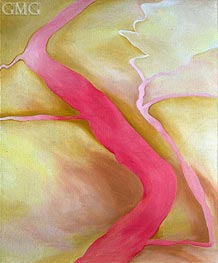
Giclée Canvas Print
$68.94
$68.94
SKU: 13033-OKF
Georgia O'Keeffe
Original Size:91.5 x 76.2 cm
Cleveland Museum of Art, Ohio, USA
Georgia O'Keeffe
Original Size:91.5 x 76.2 cm
Cleveland Museum of Art, Ohio, USA
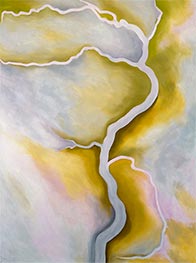
Giclée Canvas Print
$61.72
$61.72
SKU: 18547-OKF
Georgia O'Keeffe
Original Size:105.4 x 79.7 cm
Public Collection
Georgia O'Keeffe
Original Size:105.4 x 79.7 cm
Public Collection
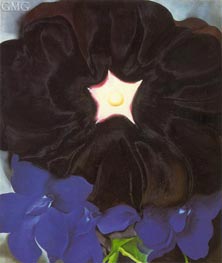
Giclée Canvas Print
$68.79
$68.79
SKU: 3870-OKF
Georgia O'Keeffe
Original Size:91.4 x 76.2 cm
Metropolitan Museum of Art, New York, USA
Georgia O'Keeffe
Original Size:91.4 x 76.2 cm
Metropolitan Museum of Art, New York, USA
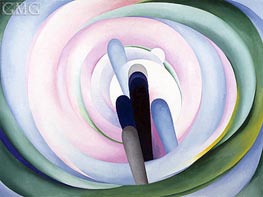
Giclée Canvas Print
$62.02
$62.02
SKU: 13038-OKF
Georgia O'Keeffe
Original Size:91.4 x 121.9 cm
Dallas Museum of Art, Texas, USA
Georgia O'Keeffe
Original Size:91.4 x 121.9 cm
Dallas Museum of Art, Texas, USA

Giclée Canvas Print
$62.02
$62.02
SKU: 3869-OKF
Georgia O'Keeffe
Original Size:unknown
Alfred Stieglitz Collection, Washington, USA
Georgia O'Keeffe
Original Size:unknown
Alfred Stieglitz Collection, Washington, USA
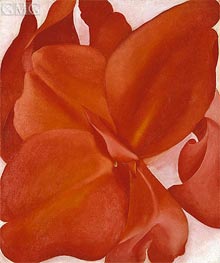
Giclée Canvas Print
$69.24
$69.24
SKU: 13023-OKF
Georgia O'Keeffe
Original Size:91 x 76 cm
Amon Carter Museum, Texas, USA
Georgia O'Keeffe
Original Size:91 x 76 cm
Amon Carter Museum, Texas, USA
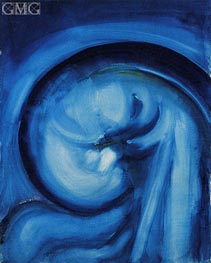
Giclée Paper Art Print
$63.36
$63.36
SKU: 13021-OKF
Georgia O'Keeffe
Original Size:71.4 x 57.3 cm
Public Collection
Georgia O'Keeffe
Original Size:71.4 x 57.3 cm
Public Collection
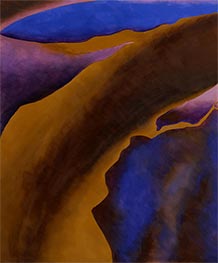
Giclée Canvas Print
$68.49
$68.49
SKU: 18202-OKF
Georgia O'Keeffe
Original Size:91.5 x 76.4 cm
Smithsonian American Art Museum, Washington, USA
Georgia O'Keeffe
Original Size:91.5 x 76.4 cm
Smithsonian American Art Museum, Washington, USA
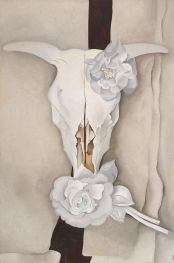
Giclée Canvas Print
$54.94
$54.94
SKU: 19791-OKF
Georgia O'Keeffe
Original Size:91.4 x 61 cm
Art Institute of Chicago, Illinois, USA
Georgia O'Keeffe
Original Size:91.4 x 61 cm
Art Institute of Chicago, Illinois, USA
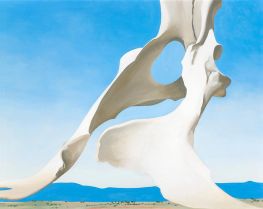
Giclée Canvas Print
$65.77
$65.77
SKU: 19883-OKF
Georgia O'Keeffe
Original Size:60.6 x 75.6 cm
Indianapolis Museum of Art, Indiana, USA
Georgia O'Keeffe
Original Size:60.6 x 75.6 cm
Indianapolis Museum of Art, Indiana, USA
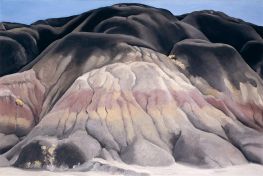
Giclée Canvas Print
$55.54
$55.54
SKU: 19882-OKF
Georgia O'Keeffe
Original Size:50.8 x 76.2 cm
Indianapolis Museum of Art, Indiana, USA
Georgia O'Keeffe
Original Size:50.8 x 76.2 cm
Indianapolis Museum of Art, Indiana, USA